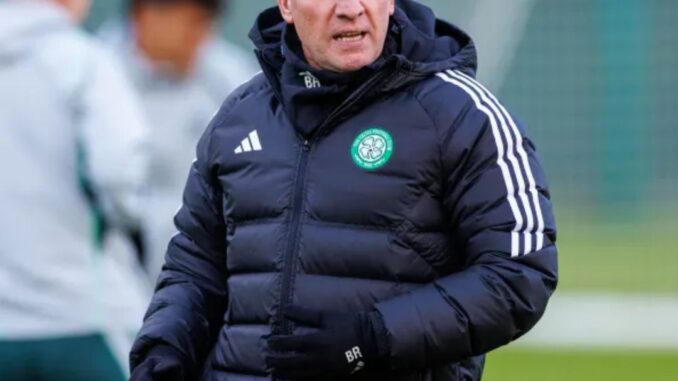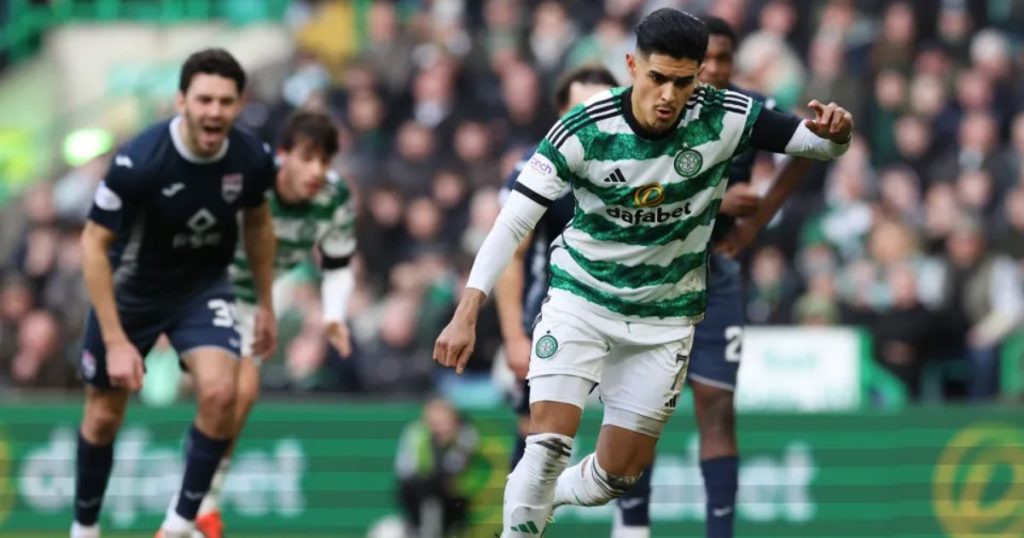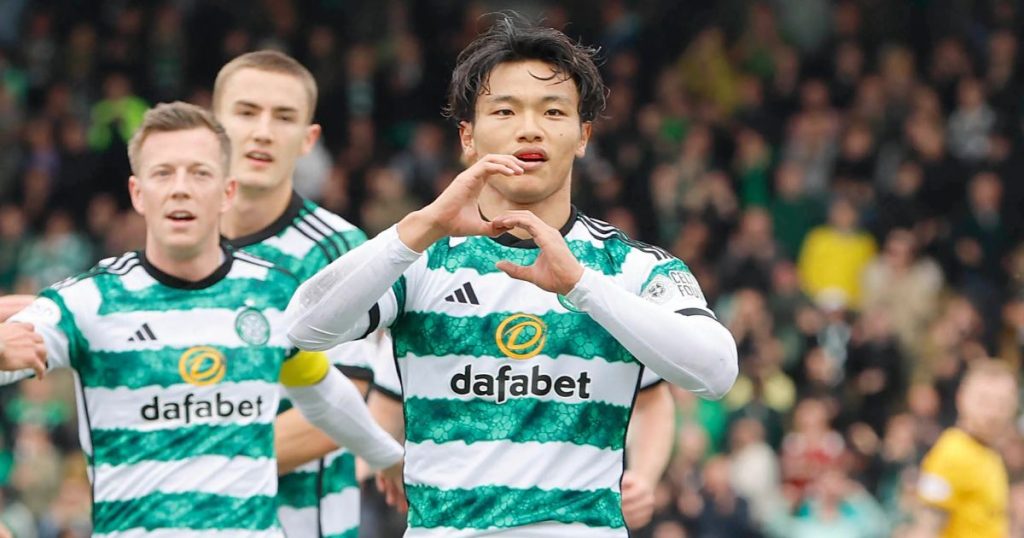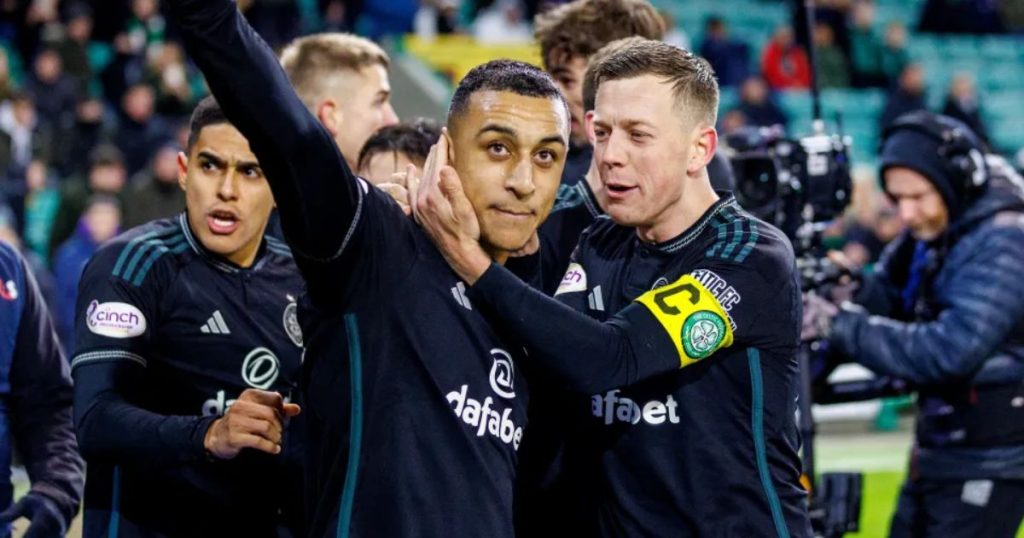
Considering that Celtic is currently two points behind Rangers and that the Hoops have a worse goal differential than Philippe Clement’s team—+40—it is evident that Brendan Rodgers’ strategies aren’t bringing out the best in his players.
Rodgers has used his 4-3-3 formation, which is by no means a poor formation, for the majority of the season.
But because of the way the Irishman changed Celtic’s playbook from the previous campaign, the Bhoys aren’t scoring as frequently or creating as many opportunities, especially when playing against weaker teams at home.
Celtic has averaged 2.23 goals scored per 90 minutes and 0.69 goals conceded after 26 league games this season.
They averaged 3.00 goals scored per 90 possessions and 0.89 goals conceded at the same point in the previous season.
This means that, compared to previous season, when they averaged 2.11 more goals than they conceded per 90, Celtic scores 1.54 goals more on average per game this season than they do under Ange Postecoglou.
As a result, the data shows that Celtic scored lower. It’s interesting to note that they give in less on average.
When the Hoops do concede, it is much more expensive with a reduction in goal differential of -0.57 because of the goal differential.
Even though Celtic switched to a 4-2-3-1 style for the last two games, starting Kyogo Furuhashi as a number ten behind Adam Idah, their wingers’ lack of inventiveness in wide areas has been costly.
Just as it has during the majority of the season with the 4-3-3 configuration, this problem still exists.
WIDE PLAY

Despite having decent stats—five goals and nine assists in 21 league games—Luis Palma’s wing play is predictable; he prefers to cut inside onto his right foot and avoid moving down the line to throw crosses into the box.
The Honduran international’s ability to play through balls, shoot from distance, and finish within the box, though, is one of his most amazing skills.
This means that rather than being driven out onto the wing, where he looks wasted, he would definitely flourish if shifted inside to play as a number 10 with the flexibility to move as he pleases.
MIDFIELD OPTIONS

Even though Paulo Bernardo looked good before the winter break, especially against St. Mirren and Rangers, he hasn’t been able to replicate Reo Hatate’s fortunate creation.
Hatate is a better all-around player who can pass, dribble, and score goals on a regular basis than the Portuguese midfielder.
Matt O’Riley, who earned praise for his play in the first part of the season, has collapsed since the New Year, and Celtic are in dire need of Hatate’s originality.
The Japanese international sustained a torn calf during Japan’s Asian Cup match two weeks ago, which is keeping him out of action.
It is anticipated that he will miss a month of action for Celtic and will require six weeks to recover.
Hatate will surely return to the starting lineup as soon as possible because the Hoops have been without his inventiveness for most of the season.
This implies that Callum McGregor, O’Riley, and Hatate will likely make up Rodgers’ midfield three moving forward.
Reverting to a midfield three would surely be the best course of action.
O’Riley is frequently caught higher up the pitch, leaving McGregor solitary in counterattacks since the team switched to a midfield two.
Therefore, a midfield three gives Celtic better defensive balance and a more flexible midfield structure.
Though there are still concerns about how to effectively position Celtic’s front line, it is certain that Kyogo and Palma are must-haves; aside from O’Riley, their goal participation this season has made them the Hoops’ greatest goal threat.
Idah offers a bigger goal threat than Daizen Maeda, who has only three goals and two assists in 19 league outings. Since arriving on deadline day, Idah has scored two goals and provided an assist in three Scottish Premiership matches.
Rodgers will thus have to work hard to integrate his top players into the starting 11.
THE SOLUTION?

Switching to a midfield diamond with Kyogo and Idah up front and Palma behind could be one way to solve the problem.
Since a brief period during the 2020–21 season, when Neil Lennon used the unorthodox system from December 2020 until his final resignation in February 2021, Celtic has not used a 4-3–1-2 formation.
With Greg Taylor’s strong performance on Saturday and Cameron Carter-Vickers‘ return to training this week, the Hoops’ back four in this system would be virtually guaranteed.
In the Scottish defender’s absence, Alexandro Bernabei has shown to be a significant downgrade.
With costly errors resulting in goals given up against Kilmarnock and Aberdeen, Celtic lost four out of a possible five points.
After Alistair Johnston’s injured comeback, the only question that remains is whether Anthony Ralston will keep starting.
As seen by his assist for Kyogo on Saturday against Kilmarnock, Ralston offers a better crossing threat in the final third and, more significantly, width on the right side.
In contrast, Johnston has underperformed this season despite having an outstanding finish to the previous one after joining the team in January 2023. He also finds it difficult to provide assists in the last third of the game.
O’Riley, Hatate, and Ralston’s mobility in large areas would be crucial in such a small formation.
As a result, a diamond formation would enable O’Riley the opportunity to occasionally shift into the right-wing area when spaces open up and play crosses into Kyogo, as he did with great success under Postecoglou, and provide Taylor the ability to invert, as he enjoys.
Having played left back in Japan in the past, Hatate has also established a strong rapport with Taylor, allowing both players to switch positions on the left side of the field with ease.
Above all, Palma’s greatest assets would still be intact: the ability to create opportunities from the center and take shots on goal.
Last but not least, a front two consisting of Kyogo and Idah, who have gotten along rather well in a short amount of time, would enable both players to occasionally drop deep and assist the midfield.
This would give opposition defenders more uncertainty up front and make it difficult to decide which striker to mark when the other goes deep.
It remains to be seen if the manager uses this formation, or any other formation, in the upcoming weeks.
Read more news on…https://sportupdates.co.uk

Leave a Reply